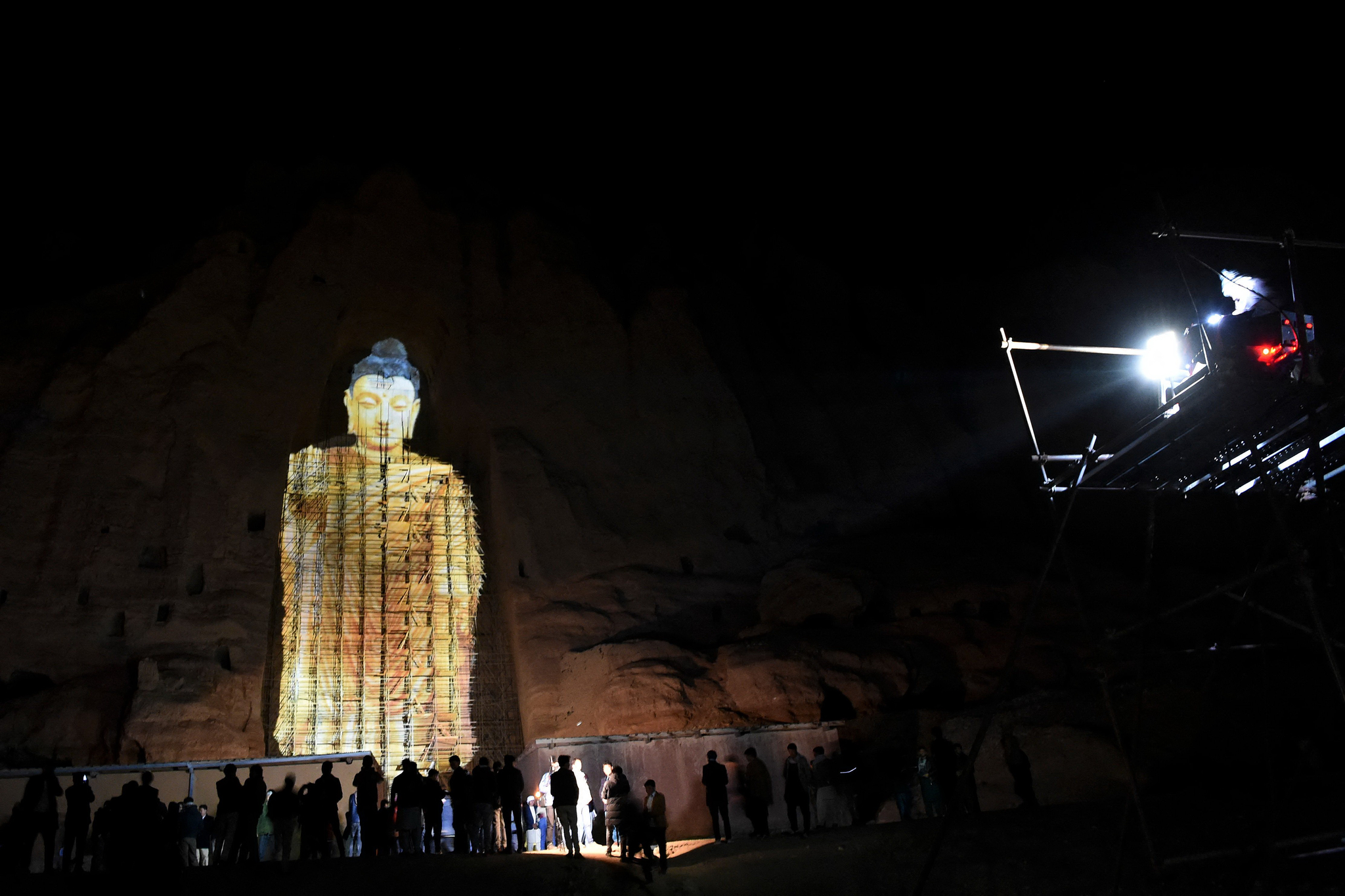Bamian Stone Buddha resurrected after 20 years. However, the giant Buddha emerged in the air as a 3D image for a while and then disappeared.

On the night of the 9th, a 3-D image of a 56m high’Salsal’ Buddha is projected in the Bamian Valley in Afghanistan. The giant Buddha statue, called the Bamian Stone Buddha, was destroyed by the Taliban regime in March 2001, 20 years ago. AFP=Yonhap News
The Bamian Stone Buddha was the largest in the world. The two stone Buddhas carved 56m and 38m high on the rock wall of the Bamian Valley, 125 km west of the capital of Afghanistan, were the great heritage of mankind. It was created during the Kushan Dynasty. In the 6th and 7th centuries, when Buddhism flourished in Afghanistan, Buddhists from China and India gathered here, and they appear in Hyecho’s’Wang and Five Heavens Festival.
These massive Buddhist ruins began to be damaged in the 20th century. After the Soviet invasion of Afghanistan in 1979, Russian soldiers engraved their names on the stone buddha. During the Afghan Civil War in 1998, the head and legs were broken by bombing. And in March 2001, Mohammad Omar, the highest leader of the Taliban, who was in power in Afghanistan, ordered the destruction of the stone Buddha on the grounds that it was a blasphemous legacy. The Bamian Stone Buddha was completely destroyed by rocket shells.

The world’s largest stone Buddha, Bamian’Salsal’ Buddha was destroyed by the Taliban 20 years ago. AFP=Yonhap News
The Bamian Stone Buddha is being restored with the support of the international community such as UNESCO. Scaffolding for construction is installed in the room. On the 9th, in the 20th year of the destruction of the stone Buddha, an event was held in which the image of the stone Buddha was projected in a 3D image.

On the evening of the 9th, Bamian residents and social activists hold lamps to celebrate the 20th anniversary of the destruction of the Bamian Stone Buddha. You can see the empty chamber where the stone Buddha stood behind. AFP=Yonhap News

A huge figure of the Bamian Stone Buddha before it was destroyed by the Taliban. The two Bamian Stone Buddhas were the representative historical and cultural heritage of Afghanistan before it was destroyed. It was built by carving sandstone cliffs when Buddhism flourished in the area in the 6th and 7th centuries. At the time, Bamian was the center of trade linking China, Europe, India, and Central Asia. The 38m high Buddha statue on the east side was built in the 6th century, and the 56m Buddha statue on the west side (pictured above) was built in the 7th century. Monks devoted themselves to hundreds of caves around, and it is said that they were decorated with excellent murals. EPA=Yonhap News

An Afghan Hazara man drives a donkey through the Bamian Valley. It looks like 2005 after the stone Buddha was destroyed. EPA=Yonhap News

Bamian Valley in 2011, 10 years after the destruction of the stone Buddha. EPA=Yonhap News

Bamian Valley on March 5th. At the time the stone Buddha was built, Buddhism flourished, but there are now mosques in the Bamian Valley. The Bamian Stone Buddha was destroyed 20 years ago by the Taliban regime in Afghanistan in March 2001. AFP=Yonhap News
Reporter Choi Jeong-dong
![]()
